If you’ve ever craved a slice of homemade bread that’s both hearty and nourishing, this oat flour bread recipe is your answer. Packed with fiber and naturally gluten-free (when using certified oats), this bread is perfect for anyone looking to cut back on refined flour without compromising flavor or texture.
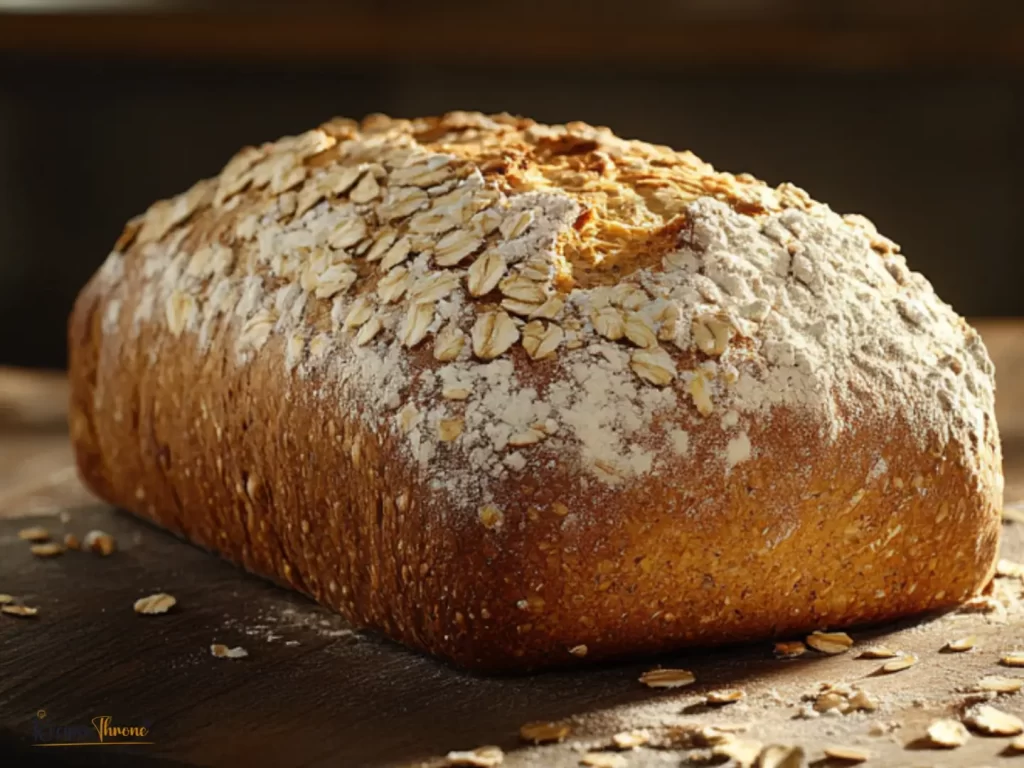
In this guide, I’ll walk you through the steps to create a wholesome loaf using oat flour—from ingredients to pro baking tips. Whether you’re diabetic, gluten-sensitive, or just aiming to eat cleaner, this recipe checks all the boxes. Let’s dive into why oat flour is such a bread-making gem.
Table of Contents
Why Oat Flour Bread Is a Staple in My Kitchen
Wholesome Mornings with My First Oat Loaf
One chilly morning in Tennessee, I woke up determined to bake something comforting yet healthy. My doctor had just told me I needed to monitor my blood sugar, and traditional white bread was off the menu.
So, I dusted off an old recipe card I had scribbled on years ago, grabbed some oat flour, and gave it a go. That first loaf came out soft, slightly nutty, and beautifully golden, comforting in every sense. Now, oat flour bread is a staple in my kitchen, and it’s one of those recipes that feels like a hug in loaf form.
Oat flour is rich in beta-glucan, a type of soluble fiber proven to lower cholesterol and improve blood sugar control, making it a fantastic base for a health-forward loaf.
Why You’ll Love This Oat Flour Bread Recipe
This oat flour bread recipe is packed with flavor and nutrients. Oat flour is naturally high in beta-glucan, a soluble fiber that lowers cholesterol and controls blood sugar. This makes it especially helpful for people managing diabetes or heart health. Oat flour has a warm, mildly sweet flavor that pairs wonderfully with savory or sweet toppings.
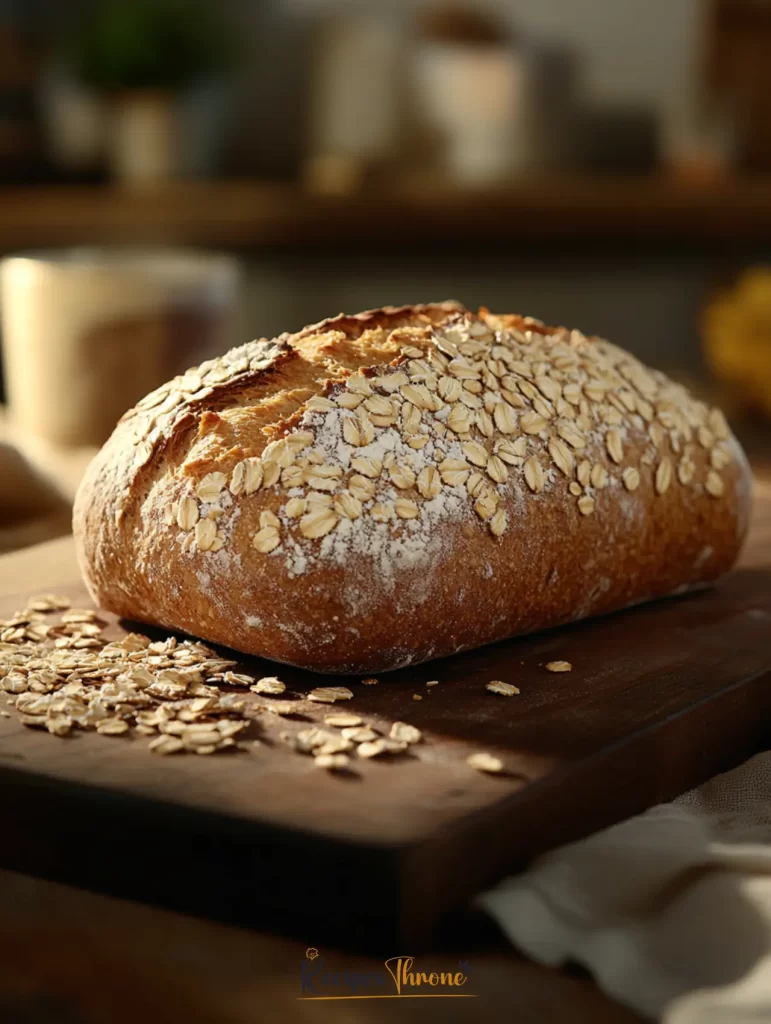
I love how easy it is to make—no kneading required and minimal ingredients. Yet it yields a sturdy sandwich loaf and is soft enough for toast. It’s also gluten-free when you use certified gluten-free oats, which makes it perfect for those avoiding wheat.
You can find more health-focused recipes like this Overnight Oats for Diabetics that offer great companion reads to this bread recipe.
Why Oat Flour Bread Is a Healthy Choice
The Nutritional Powerhouse Behind Oat Flour Bread
Oat flour bread isn’t just another health trend—it’s a practical, satisfying alternative to traditional white or wheat loaves. One of the most significant advantages of using oat flour is its high fiber content, especially beta-glucan. This type of fibre slows digestion and helps regulate blood sugar levels, so many experts recommend it as part of a balanced diet for people with diabetes.
This recipe fits beautifully into a balanced diabetic meal plan. According to the American Diabetes Association’s nutrition guidance, choosing fiber-rich, whole-grain ingredients like oat flour can help stabilize blood sugar levels.
Unlike refined flour, oat flour retains its whole-grain properties. That means it’s loaded with minerals like magnesium and iron and is naturally gluten-free if made from certified oats. So when someone asks, “Is oat flour good for bread making?” the answer is a confident yes, for flavor, texture, and health.
Oat flour bread also keeps you full longer, which can help reduce unnecessary snacking throughout the day. It’s a great option whether you’re watching your blood sugar, trying to increase your fiber intake, or want to make better bread at home..
Ingredients and Step-by-Step
Simple Ingredients with Big Benefits
The straightforward ingredient list is one of the best parts of this oat flour bread recipe. There’s no long proofing process or fancy tools needed—just wholesome staples you likely already have in your pantry. Here’s what you’ll need:
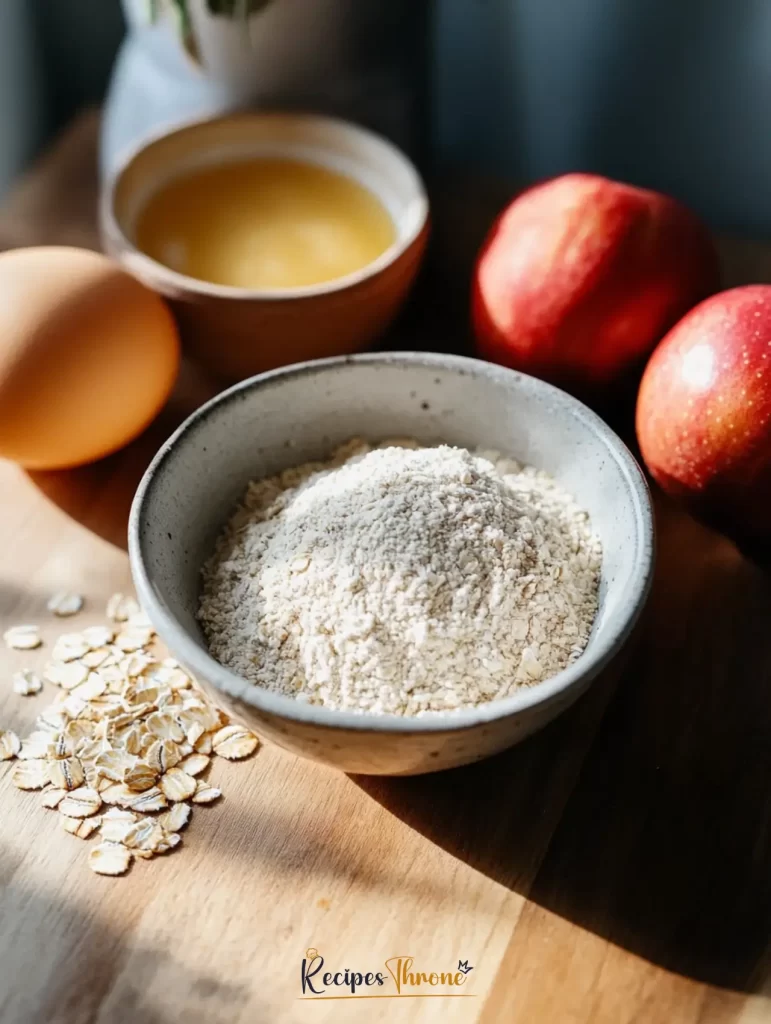
- Oat flour: You can use store-bought or grind rolled oats into a fine powder using a high-speed blender.
- Eggs act as a binder, helping structure the loaf and aiding in rising.
- Baking powder – This gives the bread its essential lift without yeast.
- Apple cider vinegar – Reacts with baking powder for extra fluffiness.
- Salt – To bring out flavor.
- Unsweetened applesauce or mashed banana – Adds moisture and a slight sweetness.
- Milk (dairy or non-dairy) – To help bring the dough together.
This bread doesn’t require kneading, so it can be made from mixing to baking in under 10 minutes. If you want a savory twist, stir in chopped herbs or shredded cheese. Cinnamon and a touch of maple syrup make it irresistible for a breakfast-style loaf.
Prepping Your Pan and Getting the Perfect Texture
To ensure the loaf doesn’t stick, line your baking pan with parchment paper or lightly oil it. After mixing your ingredients, let the batter rest for 5–10 minutes. This allows the oat flour to absorb moisture, making the dough easier to handle and giving your bread a more cohesive texture once baked.
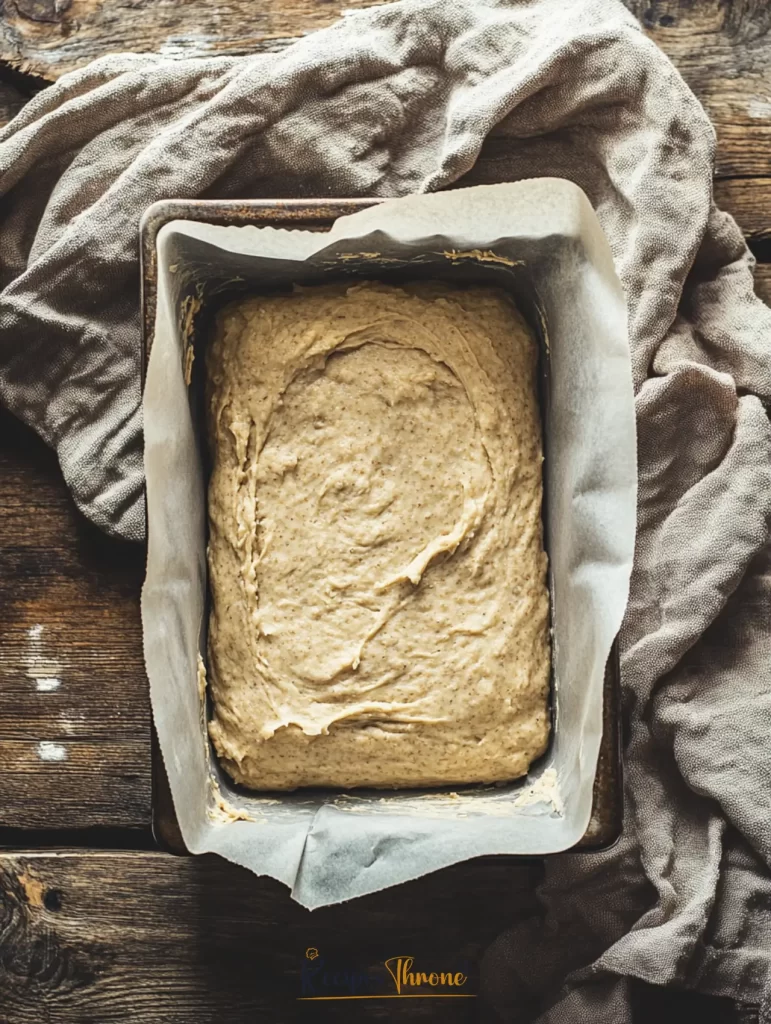
Always bake in a preheated oven. This helps your bread form a nice crust while cooking evenly throughout. You’ll know it’s done when the top is golden and a toothpick comes out clean.
Storing, Serving, and Why It’s Perfect for Diabetics
Why Oat Flour Bread Is a Game-Changer for Diabetics
If you’re wondering, “What is the healthiest bread for diabetics?”—this oat flour bread recipe is a strong contender. Thanks to its low glycemic index and high fiber content, oat flour doesn’t spike blood sugar the way white or even some whole wheat bread can. This makes it a wise choice for those managing type 2 diabetes or anyone aiming for stable energy throughout the day.
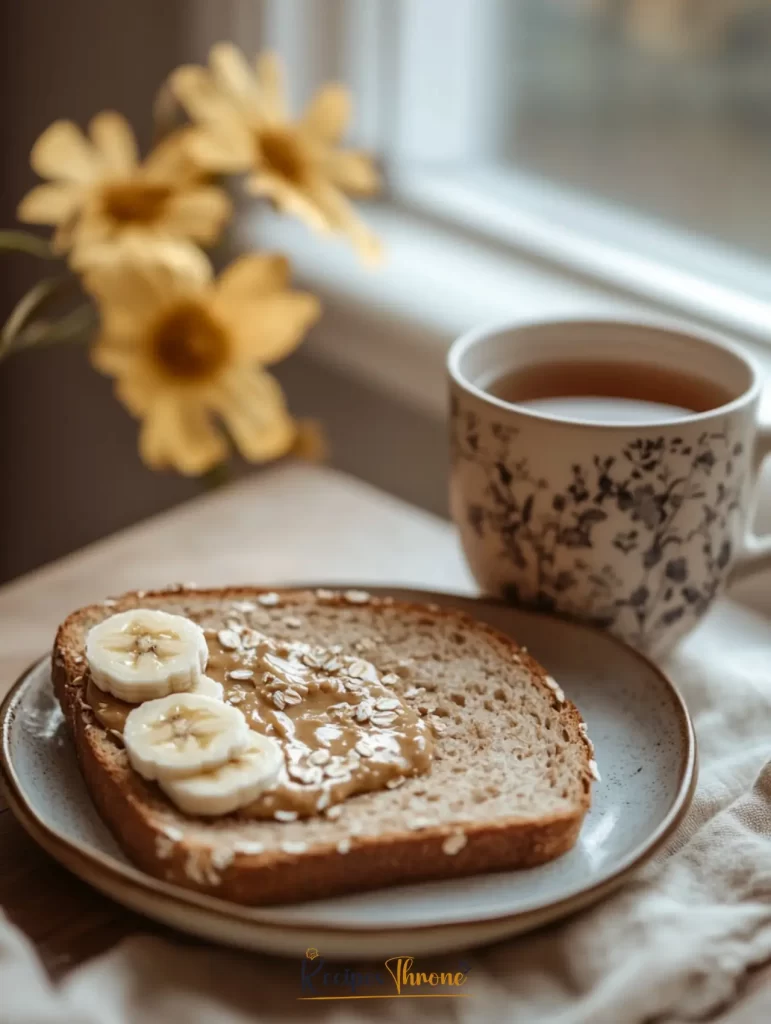
Oats contain beta-glucan, a powerful soluble fiber that slows glucose absorption and improves insulin sensitivity. That’s why doctors often recommend oat-based foods to people living with diabetes. When folks ask, “Is oat bread OK for diabetics?” I always say yes—especially when it’s homemade and free from added sugars or refined flour.
For more blood sugar–friendly options, browse my diabetic-friendly comfort meals like Overnight Oats for Diabetics and the Easy Chicken Slow Cooker Mushroom Soup.
How to Store and Serve This Bread
This oat flour bread is best stored in an airtight container at room temperature for up to 2 days or in the fridge for 5–6 days. To freeze, slice the loaf and wrap individual pieces before storing them in a freezer-safe bag. You can toast a slice anytime without thawing the whole loaf.
By swapping refined white flour for oat flour, you’re supporting digestion and long-term energy. The Cleveland Clinic emphasizes the importance of whole grains for heart and metabolic health.
The possibilities for serving are endless. Toast it with avocado and chili flakes for a savory bite. Spread almond butter and sprinkle cinnamon for a sweet breakfast. You can even make sandwiches with it—just be gentle, as it’s slightly more tender than store-bought sandwich bread.
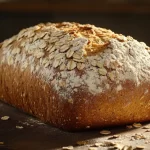
Oat Flour Bread Recipe: Amazing 5-Ingredient Healthy Loaf
- Total Time: 50 minutes
- Yield: 1 loaf 1x
Description
A simple and healthy oat flour bread recipe that’s soft, gluten-free, and perfect for diabetics. Ready in under an hour!
Ingredients
- 2 cups oat flour (gluten-free if needed)
- 2 large eggs
- 1 cup milk (dairy or non-dairy)
- 1/3 cup unsweetened applesauce or mashed banana
- 1 tsp baking powder
- 1 tsp apple cider vinegar
- 1/2 tsp salt
Instructions
- 1. Preheat oven to 350°F (175°C). Grease or line a loaf pan with parchment paper.
- 2. In a bowl, mix oat flour, baking powder, and salt.
- 3. In a separate bowl, whisk eggs, milk, applesauce, and vinegar.
- 4. Combine wet and dry ingredients until smooth. Let batter rest for 5–10 minutes.
- 5. Pour batter into prepared pan. Smooth the top.
- 6. Bake for 35–40 minutes, or until a toothpick comes out clean.
- 7. Let cool before slicing. Store in fridge or freeze in slices.
Notes
- Use certified gluten-free oat flour if needed.
- For a sweeter loaf, add 1–2 tbsp maple syrup.
- Add herbs or cheese for a savory twist.
- Prep Time: 10 minutes
- Cook Time: 40 minutes
- Category: Bread
- Method: Baking
- Cuisine: American
Nutrition
- Serving Size: 1 slice
- Calories: 110
- Sugar: 1g
- Sodium: 160mg
- Fat: 3.5g
- Saturated Fat: 0.5g
- Unsaturated Fat: 2.5g
- Trans Fat: 0g
- Carbohydrates: 15g
- Fiber: 3g
- Protein: 4g
- Cholesterol: 35mg
